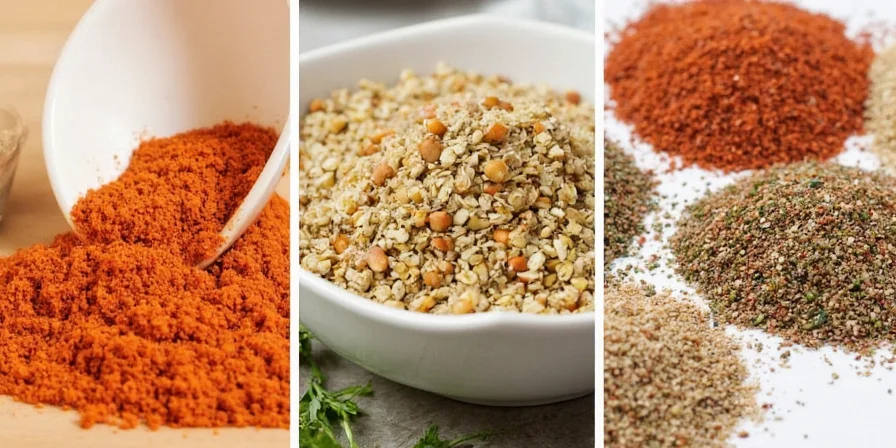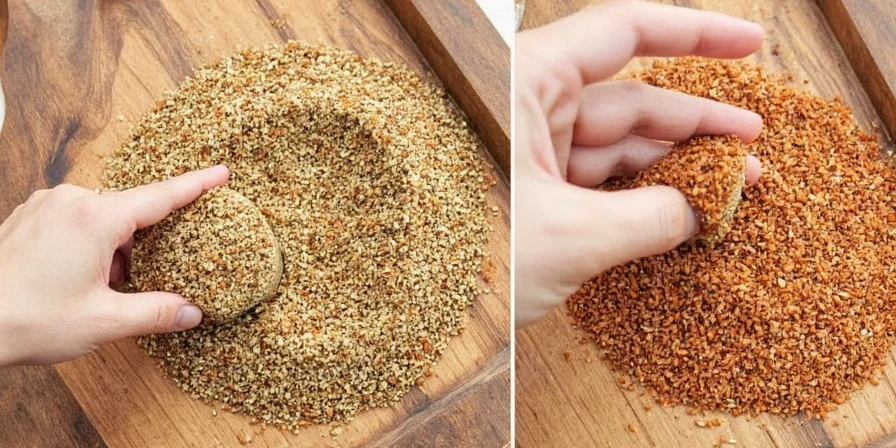5 Japanese Dry Seasoning Secrets That Will Revolutionize Your Kitchen (Even If You’re Not a Pro Chef!)
If you’ve ever bitten into a perfectly seasoned piece of sushi, or savored the umami-packed crunch of tempura sprinkled with just the right touch of spice, then you know that Japanese dry seasonings are more than just flavor boosters—they’re culinary magic. Whether you're a seasoned chef or a home cook trying to elevate your weeknight meals, these five secrets will make your kitchen pop like never before.
Table of Contents
- Introduction
- The 5 Secret Weapons of Japanese Dry Seasonings
- Deep Dive: What Makes These Seasonings So Special?
- How to Pair Them Like a Pro
- Pro Tips for Using Japanese Dry Seasonings
- Conclusion
Introduction: A World of Flavor in a Shaker
Japanese cuisine may seem minimalist at first glance, but it’s all about precision, balance, and—most importantly—flavor layering. And one of the unsung heroes behind this delicate dance? Dry seasonings.
From the smoky depth of shichimi togarashi to the briny brightness of furikake, Japanese dry seasonings are the secret weapons used by chefs and savvy home cooks alike to transform even the simplest dishes into unforgettable experiences.

The 5 Secret Weapons of Japanese Dry Seasonings
Let’s break down the holy grail of Japanese dry seasonings and why each deserves a spot in your pantry:
- Shichimi Togarashi: The Seven-Flavor Pepper Blend
- Furikake: Umami-Rich Rice Toppers
- Ishiri: Dried Fermented Fish Sauce Crystals
- Kombu Powder: Nature’s MSG
- Wasabi Salt: The Fiery Funk Bomb
Deep Dive: What Makes These Seasonings So Special?
Each Japanese dry seasoning has its own unique origin story, ingredient profile, and ideal use case. Let’s take a closer look at what makes them tick:
| Seasoning | Main Ingredients | Flavor Profile | Best For |
|---|---|---|---|
| Shichimi Togarashi | Red chili pepper, sansho, orange peel, black sesame seeds, ginger, seaweed, & hemp seeds | Spicy, citrusy, aromatic, nutty | Noodles, grilled meat, soups |
| Furikake | Seeds, dried fish, seaweed, sugar, salt, MSG | Salty, savory, slightly sweet | Rice, popcorn, eggs, avocado toast |
| Ishiri | Fermented fish sauce crystals | Briny, rich umami | Rice, noodles, dipping sauces |
| Kombu Powder | Dried kelp | Umami bomb | Soups, stocks, roasted veggies |
| Wasabi Salt | Wasabi root powder + sea salt | Fiery, sinus-clearing | Sushi, grilled meats, cocktails |
How to Pair Them Like a Pro
Knowing which dry seasoning works best with what dish is half the battle. Here's a quick cheat sheet:
- Shichimi Togarashi → Ramen, udon, grilled chicken skewers
- Furikake → Onigiri, tamagoyaki, buttered rice
- Ishiri → Cold noodle dishes, dashi-based soups
- Kombu Powder → Miso soup base, ramen broth, sautéed greens
- Wasabi Salt → Sashimi, potato chips, Bloody Mary rims

Pro Tips for Using Japanese Dry Seasonings
Want to avoid overseasoning disasters and get the most out of your spice stash? Try these handy tips:
- Store Smart: Keep them in airtight containers away from heat and light to preserve freshness and potency.
- Toast Before Use: Lightly dry-toasting certain blends (like furikake) enhances their aroma and flavor.
- Sprinkle Last: For maximum impact, add dry seasonings after cooking, not during.
- Mix & Match: Don’t be afraid to blend different seasonings. Try shichimi + kombu powder for an instant ramen upgrade.
- Beyond Japan: These spices work great in non-Japanese dishes too! Sprinkle on tacos, pizza, or roasted chickpeas.
Conclusion: Make Every Bite Count
Japanese dry seasonings aren't just about adding flavor—they're about creating moments. The way they hit your tongue, open your sinuses, and warm your soul is something special. Whether you're new to the world of umami bombs or a seasoned spice connoisseur, there’s always room to explore, experiment, and enjoy.
So go ahead—grab a few bottles, play around, and make every meal taste like a trip to Tokyo. Because once you start using these dry seasonings, you’ll wonder how you ever cooked without them!











 浙公网安备
33010002000092号
浙公网安备
33010002000092号 浙B2-20120091-4
浙B2-20120091-4